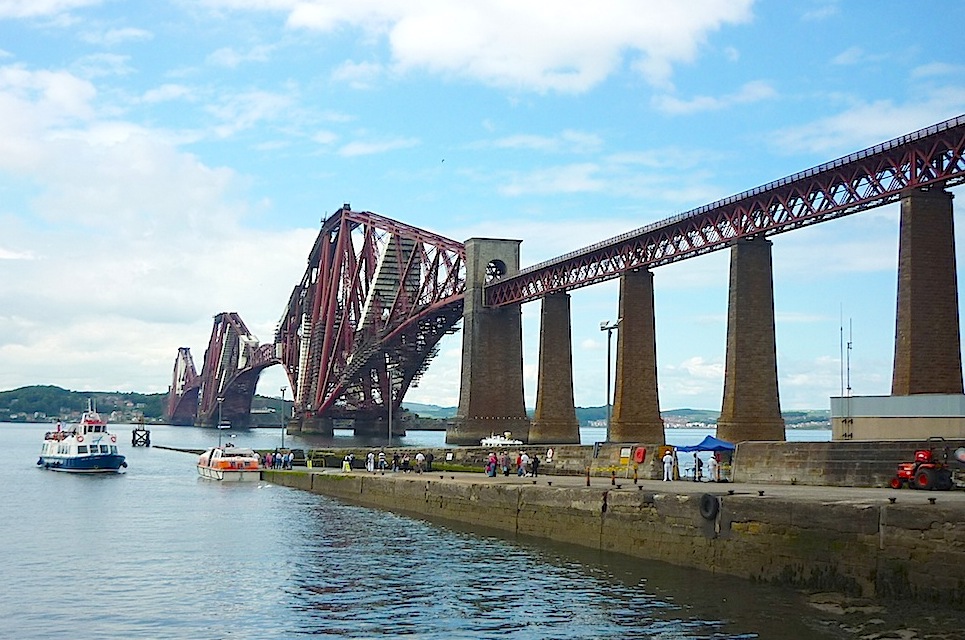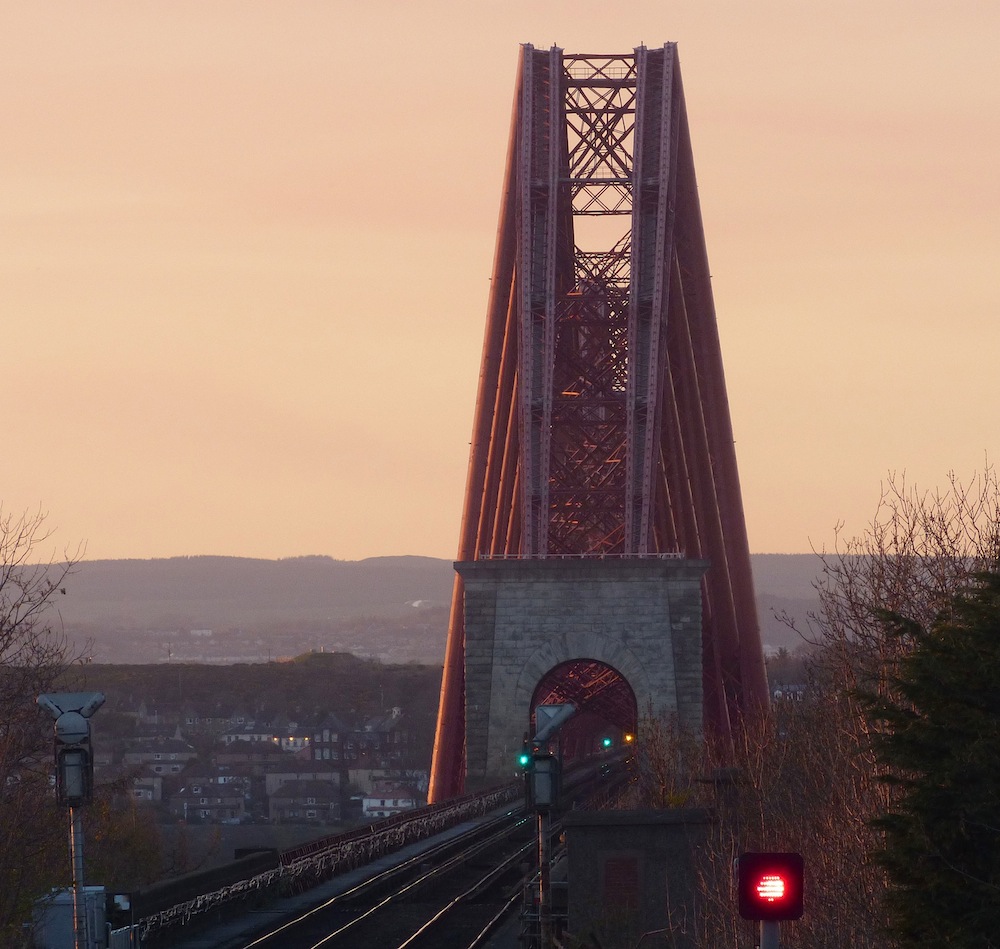First two photographs, and last one, by Colin Price (2016), remainder taken by the author in 2009. Images from the Illustrated London News provided by George P. Landow. You may use these images without prior permission for any scholarly or educational purpose as long as you (1) credit the photographer and (2) link your document to this URL or cite the Victorian Web in a print document. Click on the images to enlarge them.

Forth Rail Bridge, Scotland. Constructed 1882-89. Total length (including the approach viaducts) about 1.5 miles. Material: steel, with a total weight of 58,000 tonnes, and masonry piers. Designed by Sir John Fowler (1817-1898) and Benjamin Baker (1840-1907), who was knighted afterwards, with the assistance of Allen Stewart, and other engineers. The bridge crosses the River Forth from beside South Queensferry (generally called just Queensferry) on the east side of Scotland, to North Queensferry in Fife, on the west. On the south side, it is about 14 kms to the west of Edinburgh, so it provides a very important rail link.

Another view of the Forth Bridge, showing the masonry piers on the Queensferry (south) side.
After the tragic collapse of the Sir Thomas Bouch's Tay Bridge on 28 December 1879 during a storm, and the consequent loss of life, Bouch lost the commission for the Forth Bridge, and the present design was accepted. The water here reached 220' deep, making it impossible to have many piers: thus "the enormous spans needed and the heights at Queensferry posed problems to the engineers which they solved with a novel and breathtaking design" (Curl 230).


Two illustrations of the bridge in progress, from the Illustrated London News of December 1888. Right: Fife (north) Main Pier. Left: Three still disconnected sections viewed from the east.



From left to right: (a) Closer view of the giant masonry piers over the river, with a cruise ship in port to the right, stopping here for Edinburgh. (b) The piers from the harbour on the same bank. (c) The viaduct approach over the road here.
This was not the first great steel bridge, as is sometimes claimed. That was the work of James Eads, and was completed in St Louis, over the Mississippi, in 1874 (see Brown 72); nor was it the first cantilever railway bridge, because there was one in Germany (Hassfurt Bridge over the Main River, completed in 1867). But in its combination of material and engineering principle, it was still revolutionary. In particular, "The principle of the cantilever was fully explored in this incomparable work of Victorian engineering" (Curl 230).

The Forth Bridge in the evening, from the water.
For Sheffield-born Fowler, it was the crowning achievement of a highly successful career. An eminent engineer, he had played an important role in the building of London's first underground railway (the Metropolitan line), and had been elected President of the Institution of Civil Engineers in 1865, while he was still in his forties. He had taken Baker as his partner in 1875, and received a knighthood in 1885 for his work in Egypt and the Sudan. Despite an impressive workload (see Chrimes for his numerous achievements, which included the Liverpool Central Station) and the widespread calls on his advice, he was by all accounts a devoted family man; he loved Scotland, where he had had a home in Ross-shire since 1857. He died whilst staying at a seaside hotel in Bournemouth. Mike Chrimes also describes this bridge as "one of the greatest achievements of the Victorian age and one of its most substantial enduring monuments." Baker too was highly influential, in 1895 becoming president of the Institution of Civil Engineers in his turn, and (for example) Consulting Engineer for the Aswan Dam (1898-1902).

Looking down on the entrance to the Forth Bridge at sunset.
Related Material on the Forth Railway Bridge
- Five illustrations of the caissons for the bridge from the 1884 Graphic
- "The Victorian Railroad Station — A New Building Type."
- [Offsite] Key Facts about the Forth Bridge
Bibliography
Brown, David J. Bridges: Three Thousand Years of Defying Nature. London: Mitchell Beazely, rev. ed. 1996.
Chrimes, Mike. "Fowler, Sir John, first baronet (1817-1898)." Oxford Dictionary of National Biography. Online ed. Viewed 14 July 2009.
Curl, James Stevens. Victorian Architecture. Newton Abbot & London: David & Charles, 1990.
Spear, W. F., revised by Mike Chrimes. "Baker, Sir Benjamin (1840-1907)." Oxford Dictionary of National Biography. Online ed. Viewed 14 July 2009.
Last modified 26 April 2016